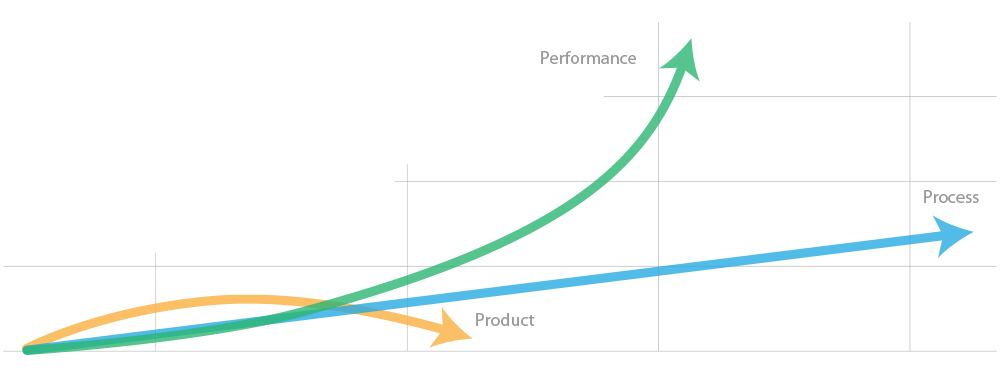Should I Publish Pricing or Rates on my Website?
The majority of non-retail business owners struggle with the prospect of posting their rates online. Many of them worry that an upfront display of potential charges will reveal sensitive information to competitors, or worse, scare away customers at a sensitive point in the “buyer’s journey.”
Nothing could be further from the truth. Publishing prices on your website can actually help boost your conversion rate. Plus, it can also provide several other benefits to your business.
I’ve drawn inspiration from Marcus Sheridan’s 5-step approach to presenting pricing online. Referencing these five steps, here are a few reasons why you can feel safe sharing pricing information.
Marcus Sheridan’s 5-Step Approach to Publishing Pricing
Marcus Sheridan’s 5 steps to an exceptional pricing page include the following:
- Share which factors drive the price of the product/service up.
- Conversely, explain which factors drive the price down.
- Recognize that some companies may charge a higher rate, and explain why.
- Do the same with companies that charge lower rates.
- Share the upper and lower price range of your typical client budgets.
The beauty of following this approach is that you won’t be pinned down to a fixed price. And at the same time, you’ve set pricing expectations. Additionally, you’ve educated prospects on key factors that play into the market price for what you do, even if they don’t buy from you. It’s never a bad thing to educate the public. Joel, of Business Casual Copywriting, does pricing phenomenally well.
Now, let’s discuss some of the bigger reasons you should implement this approach on your company’s pricing page.
1. Enhance credibility with your transparency.
If you always publish your prices, your company’s reputation will enjoy an inevitable boost. Imagine this: you’re in a face to face conversation with a salesperson. You ask about the price for the product they’re selling. Yet, he/she refuses to give you a straight answer. In fact, no matter how many times you press, they remain evasive. Would you really want to buy from him or her after that interaction?
On the other hand, publishing your prices upfront can help to build a certain level of trust with your customers right away. It shows that you’re confident in the value of your product. After all, if you’re not ashamed of the prices you charge, then what you’re selling must have some real value.
2. Avoid confusion and set clear expectations.
When companies hide their prices from customers, confusion and frustration often result. Customers don’t know what to expect as far as budget goes. Even worse, as a result of their confusion you’ll end up dealing with a lot more unqualified leads than is necessary. Clear pricing thresholds help to avoid such a lose-lose scenario. You don’t have to give your customers definitive, flat-rate prices. Answer the following questions:
- Why is this product so expensive/so cheap?
- Why is there a significant price difference between competing companies?
Explain the factors involved in the marketplace. Help your customers to understand what drives prices up, and what drives them down. Show them why some companies are more expensive than others. Set their pricing expectations, and they will appreciate you that much more.
3. Pricing pages are marketing tools, too.
To put it bluntly: you can use your pricing page to set customer expectations. I’m not in favour of manipulating prospects, but in reality, there are several ways you can prompt a higher value sale, including:
- Price anchoring. The University of Arizona conducted a fascinating study on consumer expectations (PDF). The researchers found that both inexperienced homebuyers and real estate agents alike, tended to view a listed house as a great deal when it was placed next to an identical house that carried a much higher (artificially inflated) price. This phenomenon is known as “price anchoring.” In other words, context is everything. In practice, you would: list your most expensive product or plan first, and then list your less expensive options. Prospects will view your entire catalog in a more favourable light.
- Highlighted products. Highlighting one of your products (your most popular item or service) can, in itself, increase that product’s sales. What if you operate a cleaning business? Highlight your deluxe package as a recommended choice for the majority of your customers.
- Leverage “charm pricing.” Charm pricing generally refers to a price reduction of 1 cent. Sure, there’s only a penny’s difference between $20 and $19.99. Still, something about those 9’s at the end of the price provide a subtle psychological impetus for consumers to buy.

4. Improved product/service value perception.
A common oversight for many emerging business leaders is thinking that people buy based on perceived value. In reality, many companies are selling based on their own perception of value, which causes buyers to buy that way. When we sell ‘things’, it tends to lower the value perception, or commoditize. Whereas when we position our goods and services as a means to achieve ‘desired outcomes’, it tends to raise the buyer’s perception of value (not their perception of cost).

The arrows on the diagram represent three common focuses that prospects routinely demonstrate, depending on the perspective or ‘focus’ they bring to the interaction. When setting or presenting your pricing, focus on the appropriate Perceived Value and Perceived Risk for your product or service that achieves the highest value possible.
- Product = Vendor = $ Perceived Value/Risk. Seller does ‘it’ all. Businesses sell (or buy) based on a ‘product’ or ‘deal’. Quick results, not always lasting. Safe. Can be an introductory transaction prior to larger engagement.
- Process = Partner = $$$ Perceived Value/Risk. Seller and buyer collaborate on ‘it’. Businesses sell (or buy) based on opportunity to realize continuous improvements over time. Longer term results, without rocking the boat too much. Still fairly safe.
- Performance = Coach/Leader = $$$$$ Perceived Value/Risk. Seller guides buyer. Businesses sell (or buy) based on perceived or measured value and anticipated return on investment. Significant results can be realized through adequate preparation. Takes a gambler or experienced individual to initiate and subject matter experts to execute.
The basic concept is that any of the three is fine, but increasing the perceived value of your offerings opens the door to greater revenue generation for your business.
5. Boost your SEO with information people are searching for.
So many Google searches are based around the question: “How much does [insert name of product] cost?” If you are upfront about your prices on your website, you score points with your customers. As a bonus you may enjoy a significant boost in Google rankings, because you are saying what they are asking. It’s pretty much exact match, which is excellent for search, especially for those with close proximity.
While at first it may feel awkward to publish budgeting information on your website, in the end it will likely work wonders for your business. So, give it a try! Also, if you have any other questions related to business strategy, content optimization, or the technical aspects of maintaining a website, then our teams at Kayak Marketing and wpSites are here to help.







